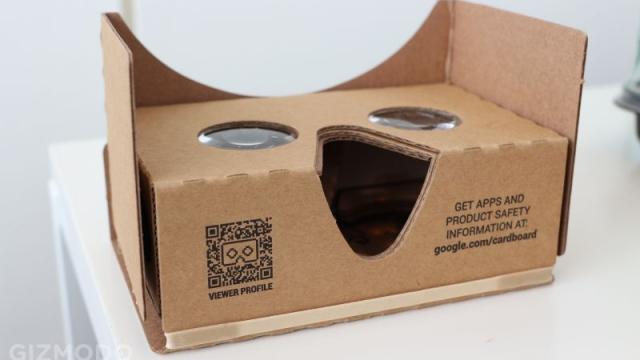When you strap on a VR headset, you’re immediately in awe of the new digital world that’s slowly manipulating your brain. The visuals sell the sensation, but sound is what makes it stick. Google’s taking strides towards making that sound more convincing.
Today, Google Cardboard is upgrading its SDK with new tools for improved positional audio — and the difference is a huge for Google’s low-cost VR effort. “People tend to focus on visual quality in VR but audio is just as important,” says Google Cardboard’s Nathan Martz. “The way people tend to do 3D audio is a pretty simple approximation…you don’t have the right audio cues.”
Using tech developed by Thrive Audio, which Google bought back in April, Cardboard developers can now create a more accurate soundscape with not just left and right audio cues, but also top, bottom, front, back and every direction in between. It’s a full 360 degrees of sound, just like it should be.
And it’s not just about direction. The team also developed algorithms to manipulate sound depending on the space you’re trying to create. If you’re in a forest, the software will mimic how sound is absorbed by trees and soil. A cave? Audio bounces around rocky walls for days.
Google Cardboard does work with one major limitation — your smartphone. Unlike the $US649 Oculus Rift that requires a whole separate (ridiculously high-spec’d) PC to create its VR illusion, Cardboard works with whatever silicon chips are packed inside your smartphone. Martz says that Cardboard’s new tools will do all the processing on a secondary CPU, meaning developers don’t need to cut away precious visual fidelity from their VR creations, so most phones will be able to take advantage of the new audio upgrade.
However, Martz says managing sound resources is where future VR audio improvements will be made. “We’re looking into how to capture more realistic soundscapes at a lower CPU cost,” Martz says. “There’s interesting techniques on the graphics rendering side…we’re wondering if there’s an audio equivalent to that.” Better algorithms and ways to capture audio is the unexplored frontier for creating the VR worlds you’ll never want to leave.
You can give Google Cardboard’s new audio superpowers a test run with its Android-only test APK. Obviously, headphones are a must.
